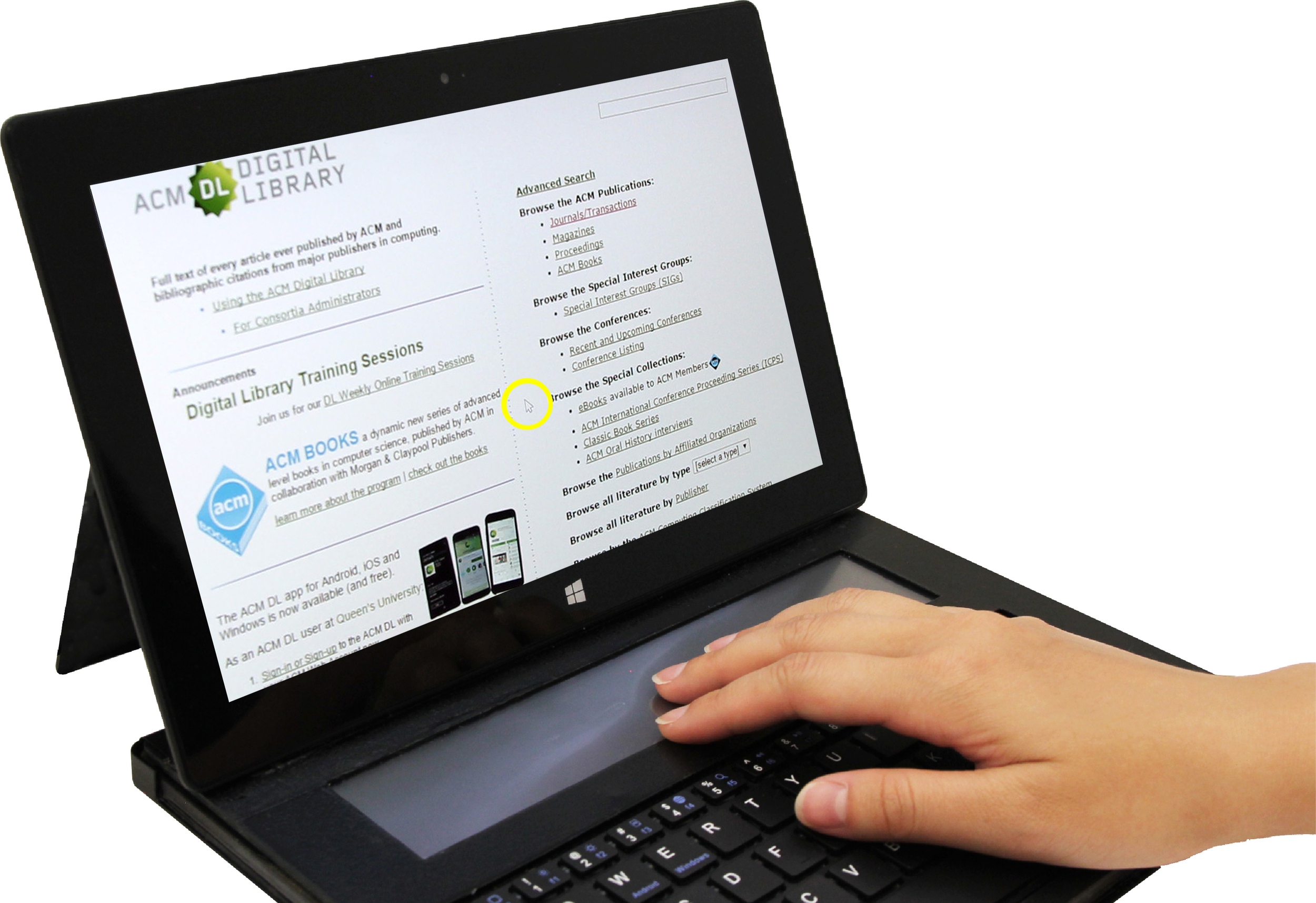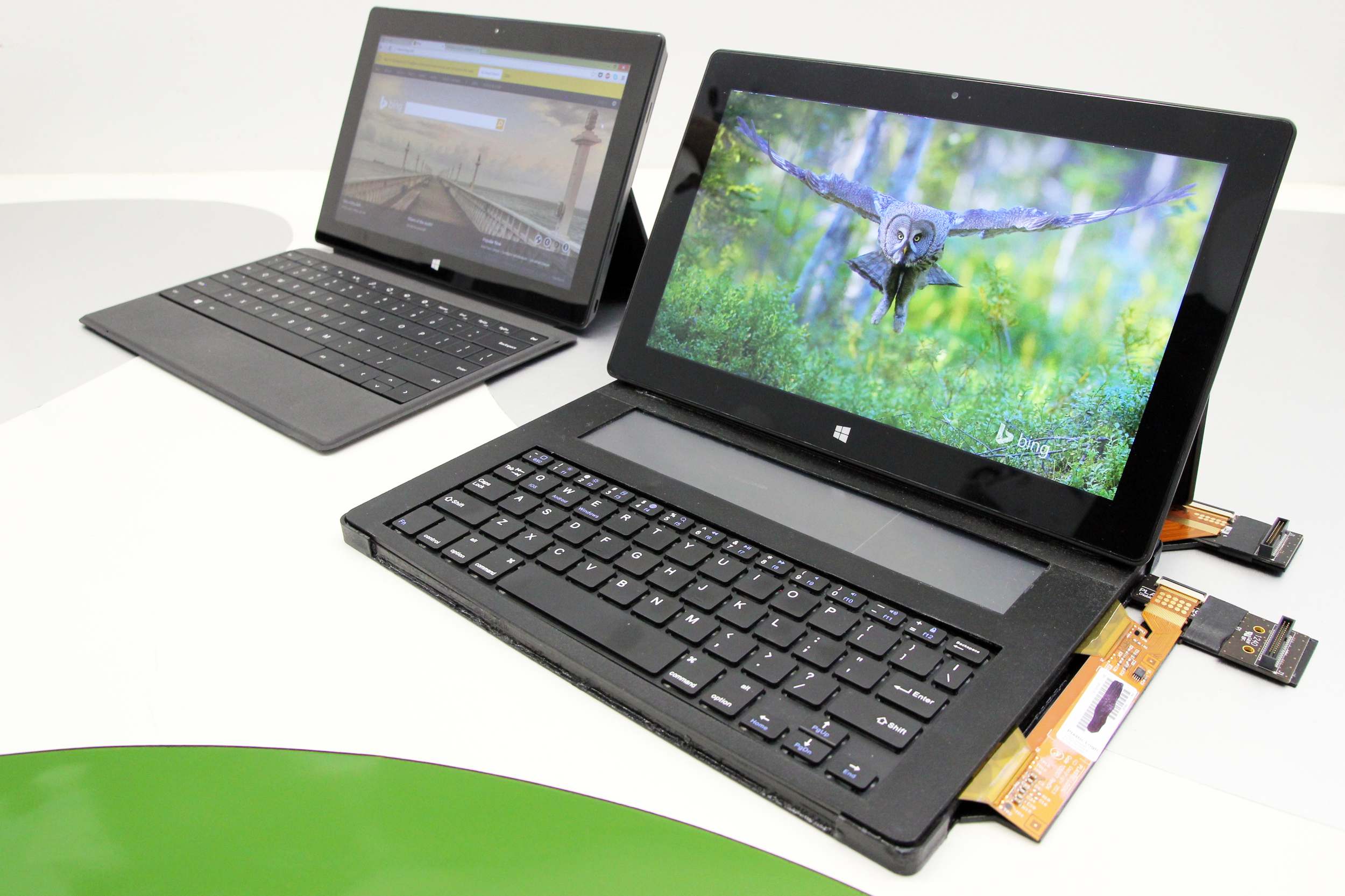Queen’s University’s Human Media Lab and the Microsoft Applied Sciences Group unveil DisplayCover at MobileHCI'15
Queen’s professor Roel Vertegaal and student Antonio Gomes, in collaboration with the Applied Sciences Group at Microsoft, unveiled DisplayCover, a novel tablet cover that integrates a physical keyboard as well as a touch and stylus sensitive thin-film e-ink display. The technology was released at the ACM MobileHCI 2015 conference in Copenhagen - widely regarded as a leading conference on human-computer Interaction with mobile devices and services.
DisplayCover is a peripheral cover designed for compact touch-enabled laptops. A tactile keyboard affords users with the comfort and ease of use provided by physical keys. A thin-film e-ink display with a resolution of 1280x305px extends the available screen real estate of the slate device by up to 8%. An e-ink display as chosen due to the bistable nature of electrophoretic ink, reducing the secondary screen's impact on battery life.
DisplayCover explores the ability to dynamically alter the peripheral display content based on usage context, while extending the user experience and interaction model to the horizontal plane, where hands naturally rest. For example, stylus annotation can be performed directly on the peripheral cover, reducing the need need for users to routinely home their hands between the slate display and the physical keyboard.
To illustrate the potential and immediate feasibility of our approach, we highlight a series of application scenarios to showcase interactions techniques and features enabled by DisplayCover, aimed at increasing productivity in compact, touch-enabled devices. Application scenarios include concurrent access to multiple applications; gestures and trackpad interactions; context-aware applications; as well as stylus annotation on the horizontal plane.
Inspiration for DisplayCover came from an ongoing effort at the Applied Sciences Group to explore peripheral input devices as a means to extend the desktop experience to peripheral hardware, which led to the development of the Microsoft Adaptive Keyboard.
About Human Media Lab
The Human Media Lab (HML) at Queen’s University is one of Canada's premier Human-Computer Interaction (HCI) laboratories. Inventions include ubiquitous eye tracking sensors, Smart Pause, PaperPhone, the world’s first flexible phone and PaperTab, the world’s first flexible paper computer. HML is directed by Dr. Roel Vertegaal, Professor of HCI at Queen's University's School of Computing. Working with him is a number of graduate and undergraduate students with computing, design, psychology and engineering backgrounds.
See http://www.humanmedialab.org
References
Gomes, A. Trutna, T. and Vertegaal, R. DisplayCover: A Tablet Keyboard with an Embedded Thin-Film Touchscreen Display. In Proceeding of ACM MobileHCI’15 Conference on Human-Computer Interaction with Mobile Devices and Services. ACM Press, 2015. [PDF]
A high resolution video of DisplayCover is available at the Human Media Lab’s YouTube channel: https://youtu.be/O5494zhyvxw
Click on the below thumbnails for high resolution photos of DisplayCover:






